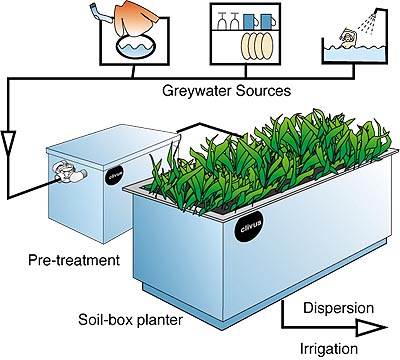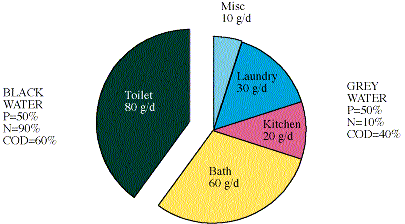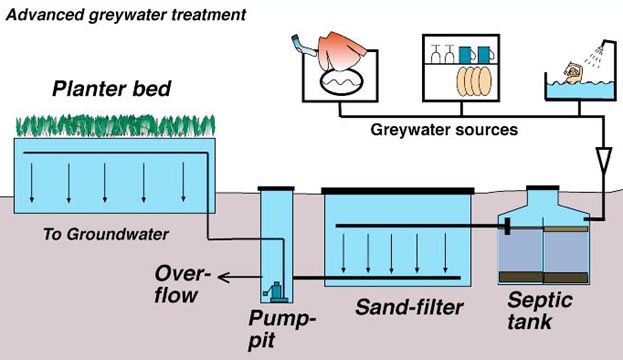

Greywater is washwater. That is, all
wastewater excepting toilet wastes and food wastes derived from
garbage grinders. There are significant distinctions between
greywater and toilet wastewater (called "blackwater"). These
distinctions tell us how these wastewaters should be treated /managed
and why, in the interests of public health and environmental
protection, they should not be mixed together.

COMBINED WASTEWATER
Greywater contains far less nitrogen than
blackwater
Nine-tenths of the nitrogen contained in combined wastewater derives
from toilet wastes (i.e., from the blackwater). Nitrogen is one of the most
serious and difficult-to-remove pollutants affecting our potential drinking
water supply.
Greywater contains far fewer pathogens
than blackwater
Medical and public health professionals view feces as the
most significant source of human pathogens. Keeping toilet wastes out
of the wastewater stream dramatically reduces the danger of spreading
such organisms via water.
Greywater decomposes much faster than
blackwater
The implication of the more rapid
decomposition of greywater pollutants is the quicker stabilization
and therefore enhanced prevention of water
pollution.
(see graphs Fig 2. &
3.).

Courtesy of Hans LÖnn, Fastighetsanalys, Älgö
![]()
This site was composed and is maintained
by Carl Lindstrom © 2000.All rights reserved . For permission to
duplicate fully or in part,
please get in touch with him by email at the following address:
carl@websida.com